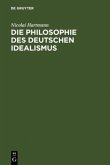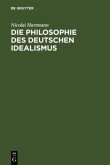How can we think unity along with plurality? This question is as old as philosophy itself. J. G. Fichte and F. W. J. Schelling also confront the problem. Developing the doctrine of the absolute, they try to conceptualise a supreme - living - unity in such a way that plurality is always already included. Stoffers describes the approaches of both philosophers in their works written between 1806 and 1814/15. Although, at this time, Fichte and Schelling no longer approve of the other's philosophical framework, their reflections show a considerable proximity: Hidden under a generous layer of polemics, it is possible to discover quite comparable arguments, ideas and metaphors about the living unity of plurality.
»Die vorliegende Studie zeichnet sich durch eine kompetente, anspruchsvolle und eigenständig-kritische Interpretation zentraler Texte aus dem Spätwerk Fichtes und Schellings aus. Über die für das abendländische Denken prägende Frage nach dem Verhältnis von Einheit und Vielheit werden die beiden Denker in ein konstruktives Gespräch miteinander verwickelt.« Paul Schroffner, Zeitschrift für katholische Theologie




